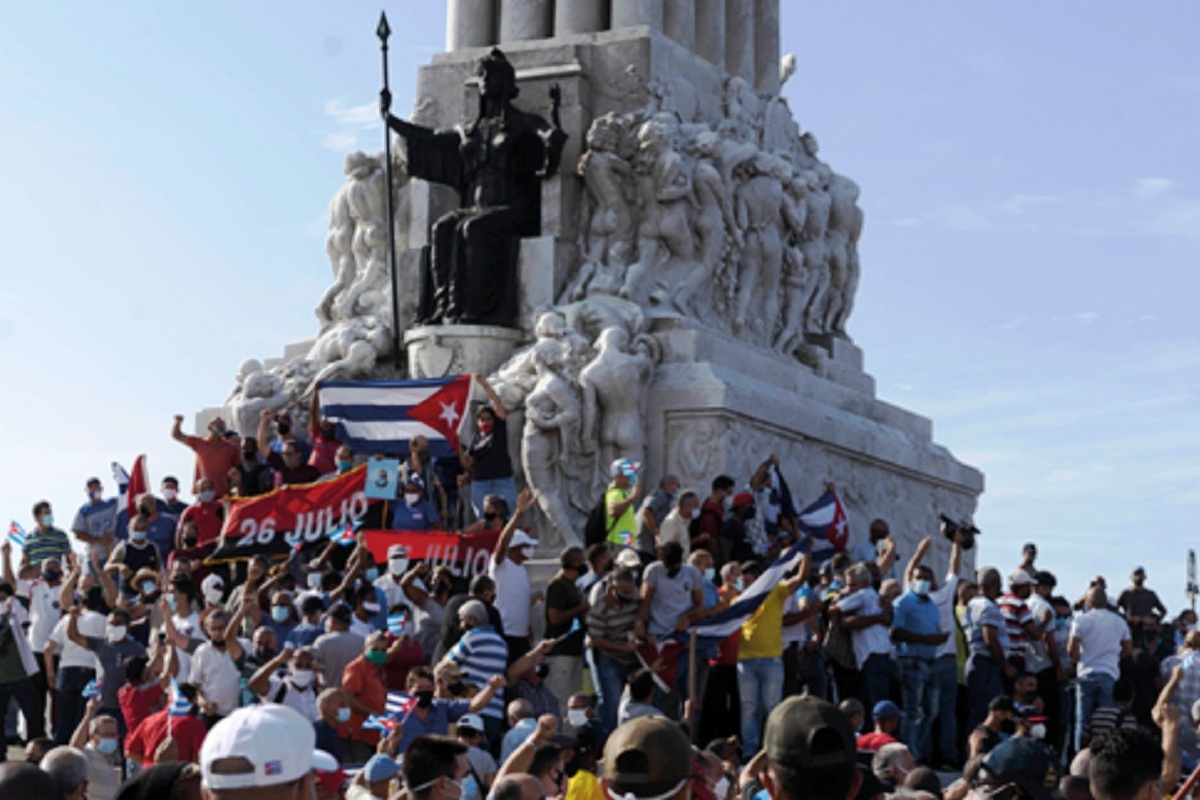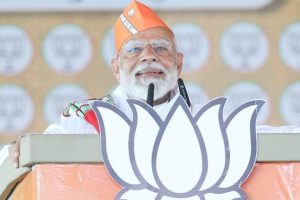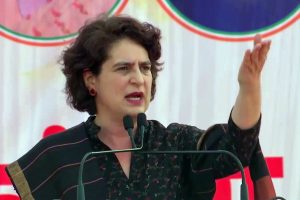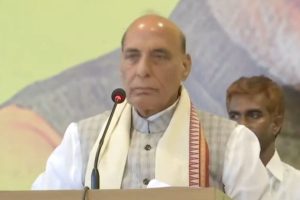The politically powerful Cuban exile community in Florida has kept champagne on ice waiting for the Cuban regime to fall ever since the collapse of the Berlin Wall. In 1990, Mexican poet and Nobel laureate Octavio Paz went a step ahead predicting that Cuban leader Fidel Castro would go Romania’s Nicolae Ceausescu way. Pro-Castro and anti-Castro groups are so bitterly divided that each side reads only what annoys them. Socialist Cuba’s demise has turned out to be a running gag of world history.
When the Soviet Union disintegrated in December 1991, most Western analysts predicted that Cuba wouldn’t be around for much longer. Pope John Paul II, President Obama and the Rolling Stones visited Cuba in subsequent years hoping Cuba may open itself to the world or maybe the world would open itself to Cuba. It appeared as if everybody wanted a chance to see socialism one last time before it died. After surviving 12 American presidents (Joe Biden is the 13th), the Cuban revolution is not likely to sputter to irrelevance any time soon. As they say, revolutions never die, they just fade away.
Recent protests have rekindled the exile community’s hopes for the end of the communist regime. What is so new this time? Protests happened in Cuba earlier also though these were rare. This time, it is the combination of Covid-19 pandemic and the subsequent collapse of tourism that seems to have provided the trigger. The Cuban government had no money to push vaccine development and manufacturing. It has been equally short of foreign exchange to import food and medicine to alleviate the situation.
What is also new is that some pro-government icons have warned the government against crackdown on protesters and dissidents. Silvio Rodríguez, the best-known Cuban singersongwriter and a national icon, met dissident playwright Yunior Garcia, and discussed the unrest and the government’s heavyhanded response. Los Van Van, Cuba’s iconic salsa band, said that they “support the thousands of Cubans who are claiming their rights… We will always support the people, whoever they are, whatever they think.” X Alfonso, the musician who founded Fabrica de Arte, the most popular nightspot in Havana, also spoke disapprovingly. Cuba is proud of its achievements in the health sector.
Its most lucrative export is not cigar or sugar but doctors. According to Time magazine, the export of healthcare professionals to foreign governments “brings in around $11 billion each year,” making it a bigger source of revenue than the tourism industry. In 2018, there were some 50,000 Cuban doctors working in 67 countries. Universal healthcare and free education continue to be fundamental to the Cuban project. Cuba is the leader in the health sector. Hence Cubans expected to be vaccinated.
Cuba has finally begun vaccination using its own Abdala and Soberana vaccines, but it came quite late. That Cuba should request aid from other countries including the Catholic charity Caritas International says a lot about the desperate situation the country is confronting. Many commentators view it as a bitter pill which the Diaz-Canel government has been forced to swallow. Venezuela has sent food by ship. Mexico also sent two navy ships with food and medicine supplies to Cuba.
Mexican ships also carried syringes, oxygen tanks and masks along with powdered milk, cans of tuna, beans, flour, cooking oil and gasoline. The period following the disintegration of the Soviet Union was the most critical phase in Cuba. Even the most optimistic thought Communist Cuba would die a natural death in the absence of Soviet economic and military assistance. What Castro did was to attempt further ideological rigidity. He rejected perestroika and simply fine-tuned the existing politico-economic structures without disowning Marxism-Leninism.
‘Doing more with less’ became the battle cry of Cuban leaders. Today, that option doesn’t exist. What is the secret of the revolution’s survival for so long? The Castro brothers did crush dissent but their charm and elan also helped. President Miguel Diaz-Canel is going by the same playbook. But what worked in the past may not work now. Ideological rigidity will certainly not help. His success will depend on how he ensures that the youth don’t lose faith in the future.
Cuba continues to be a jigsaw puzzle. Was Castro a “third world Napoleon,” or a “Machiavellian prince,” or what the title of his biography says “Guerrillero del Tiempo” (Warrior Across Time) or simply a third world autocrat with untrammeled power? Occasionally, Cubans suffered from food shortages. But the Cuban leaders never forced intellectuals to wear dunce caps as Mao did or forced people to raise chicken in their apartments as Muamar Gaddafi did. A small island nation, only 90 miles off the Florida Straits, successfully pursued a big country’s foreign policy.
A country which not only challenged the “Monroe Doctrine”, it brought the US closer to a nuclear war with the Soviet Union during the Missile crisis. Fidel Castro’s image and persona gave the revolution greater longevity. Castro’s guerrilla army marching triumphantly on Havana streets in 1959 was no ordinary development. He remained a fashion icon for rebellious youth globally. Castro, with his unkempt beard and khaki patrol cap invaded the living rooms of Americans.
Many in the US saw the Cuban Revolution as an embodiment of their own finest ideals. As historian Nancy Stout says, it was “the perfect revolution” for the visual media ~ short, successful and it unfolded in neat stages “like an operetta”. Why did the Cuban regime survive while East European communists fell like nine pins? In eastern Europe communism arrived behind the victorious divisions of Red Army. But the Cuban Revolution was home made. Marxism for Castro was a revolutionary doctrine, not a dogma.
Occasional noise made by the Cuban exile community notwithstanding, the American public has accepted the status quo in Cuba. Polls have found majority of Americans supporting normalization of ties with Cuba. Political scientist Samuel Goldman says, “Without the military backing of a superpower, Cuban communism lost its ability to frighten anyone.” The Biden administration’s punitive act includes sanctions on a single Cuban official.
Even Republican Congressmen are politely avoiding the issue. Cuba’s revolutionary project has lost its sheen. Castro’s promise to deliver “freedom with bread and bread without terror” has proved illusory.” Yet, while Socialist Cuba’s fall is not imminent, its longevity can’t be taken for granted either. It will depend on how the leaders invent the polity. It is said the future happens in Latin America first. Latin American leaders are too keen to remake heaven and earth. Cuba is no El Dorado.
But its sheer survival despite persistent American efforts to throttle it is no small achievement. Cuba’s future depends on the power of the new political imagination. The Cuban leadership will do well to heed Mark Twain’s advice, “the thunder is good, thunder is impressive, but it is lightning that does the work.”
(The writer is Director, Institute of Social Sciences, Delhi)











